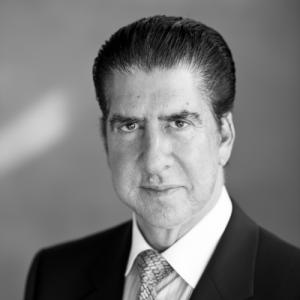Pedro Martin of Terra Talks About How Exceptional Design Comes to Be
MIAMI, FL, UNITED STATES, November 10, 2021 /EINPresswire.com/ — Since the dawn of time, design principles have stayed consistent. Contrast, color, pattern, balance, and movement play major roles in how a space feels and how people use it. The majority of us can’t define exceptional design even if we know it when they see it. Pedro Martin of Miami is the owner of a prominent real estate development firm, and he lends his insight into what turns a good design into the extraordinary.
Professional designers are typically taught all the concepts that make for both attractive and intuitive spaces. Exteriors and interiors need to be properly balanced. They need to flow from one area to another. They should make people feel comfortable while still challenging their senses.
Yet exceptional design is still a relatively rare occurrence. Pedro Martin is the CEO of the Terra Group and a major player in the industry. His firm’s portfolio includes every asset class of property, giving Martin the chance to learn from practically every design approach over the years.
His first observation is that the design needs to put people first. Pedro Martin points out that this isn’t as obvious a concept as it might seem.
There are designers who get so caught up in their vision that they never stop to ask how that picture will translate to someone besides them. This is how we end up with workarounds to get in and out of different areas of the property. It’s why people come away from a building wishing they’d never have to go back.
A coffee shop and a nuclear power plant might seem like polar opposites at first glance. However, both can use the same grounding strategies to ensure employees feel comfortable coming into work. They can incorporate solutions that make regular guests and the occasional outsider feel welcome.
This can be achieved by understanding how each part of the building interacts with another. For instance, dome-shaped structures will immediately draw the eye up before it moves back to take in the rest of the property. Pedro Martin says the designer will have to decide if it makes sense to keep the design scheme the same or highlight a portion so there’s more to take in.
They’ll also have to think about how the scale of the property will fit in with its larger function. For instance, in a grand hotel, it would be normal to impose some gravitas on the visitor. This might manifest in intricate facades and 15-foot doors. A designer wouldn't be able to do the same with a modest condo though, nor should they even want to try.
Incidentally, these kinds of considerations have sparked huge trends in real estate. For example, once people experienced the convenience of an open-floor layout on the first floor, the demand for the design spiked. (Pedro says that it’s not always easy to recreate exceptional results but this won’t stop anyone from trying.)
It made everyone from architects to designers entirely rethink how we define different parts of the home. Now, in a traditional single-family residence, designers have to imagine how anything from weekday dinners to Christmas parties will affect a resident’s or guest’s experience. They have to determine where the boundaries are and what value they bring.
This brings Martin to the importance of building your design around location. How the sun slants through the windows at lunchtime, which side of the property the mountains face, whether the surrounding hills will cast large shadows over the structure: all of these can affect the success of the chosen style.
Excellent design also means understanding the overlap between different concepts. An overreliance on contrast can upset the balance and rhythm that the designer was originally trying to create. Too much emphasis on a building can make the space look extremely busy. The eye is supposed to move naturally and use patterns to instantly understand its intention. If an onlooker can’t figure out where to look, the experience can be overwhelming at best.
One thing that can be difficult for designers to accept is that exceptional design often means that they won’t be able to please everyone. A perfectly modern building that checks off every box will mean very little to someone who only loves Victorian architecture.
That being said, Pedro Martin points out that most people can still appreciate good design even if it doesn’t happen to be their individual tastes. Personal feelings don’t discount the accomplishments of the designer.
Martin says that risks come with the territory. Playing it too safe will lead to buildings that are boring and ultimately blend in with the background. As long as the base is solid, the actual results can go in any direction. This is about filling in the gaps of design principles with unbridled creativity.
More and more, exceptional design also means incorporating sustainability. In addition to properties that look good and serve a larger purpose, owners want to know that the designer remembered the planet too. Wood might look beautiful and bring an unparalleled feeling of warmth to a building, but it’s not a smart choice if it puts a tree species in danger.
This principle pairs well with the idea of making use of what’s around you. An exceptional designer will be able to work with the resources they have rather than having to import materials. They’ll also be able to adapt their larger goals for different projects. It would be disastrous to simply copy a standard design from one property to another — even if they attempted to scale it.
Finally, Martin says that exceptional design can’t be defined by era or place. While designers should take into account the preferences of people in an area, true beauty is timeless. It’s why you can step into a building that’s 200 years old and still feel at peace.
Caroline Hunter
Web Presence, LLC
+17865519491
email us here

